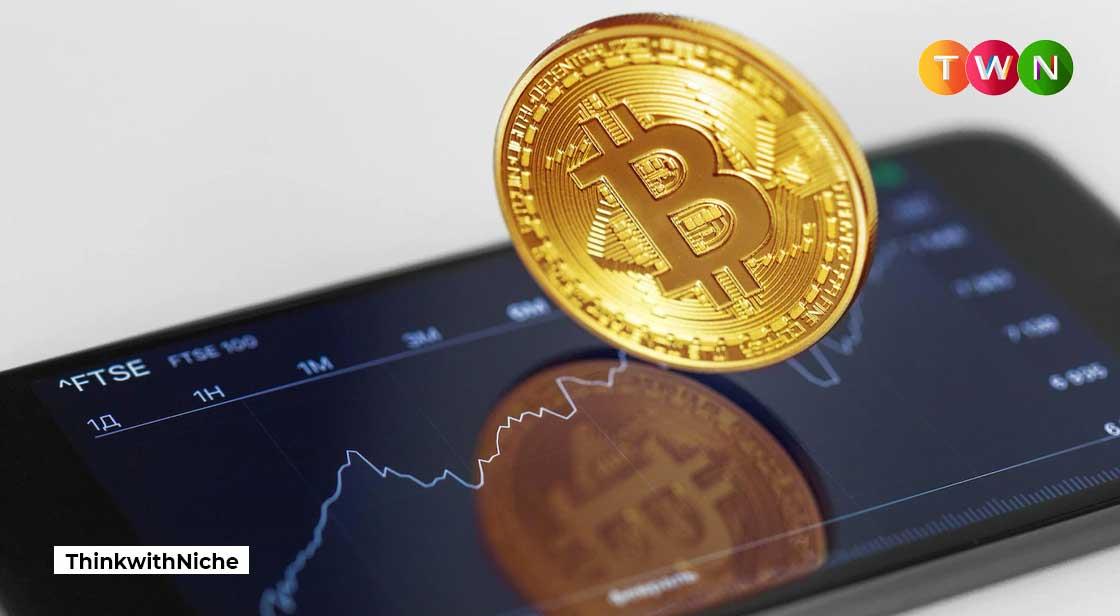What Happens to Bitcoin After All 21 million Are Mined?

Blog Post
There will be no more bitcoins created after the Bitcoin supply reaches its top limit. Transaction fees are expected to be the only source of income for bitcoin miners. One of the most distinguishing features of Bitcoin (BTCUSD) is its restricted coin supply. Bitcoin developer Satoshi Nakamoto, who goes by the pseudonym Satoshi Nakamoto, conceived the cryptocurrency essentially as digital gold and capped the Bitcoin maximum supply to match the finite amount of physical gold. #TWN
One of the most distinguishing features of Bitcoin (BTCUSD) is its restricted coin supply. Bitcoin developer Satoshi Nakamoto, who goes by the pseudonym Satoshi Nakamoto, conceived the cryptocurrency essentially as digital gold and capped the Bitcoin maximum supply to match the finite amount of physical gold. The quantity of bitcoins that can be issued (mined) is limited to 21 million. Every 10 minutes, new bitcoins are added to the Bitcoin supply, which is the average amount of time it takes to create a new block of Bitcoin. After every 210,000 blocks or roughly every four years, the number of bitcoins minted every block is cut by 50% by design.
Will Bitcoin ever reach the 21M Mark?
It is not predicted that the overall number of bitcoins issued will reach 21 million. It is because the Bitcoin network employs bit-shift operators, which are arithmetic operators that reduce decimal points to the smallest integer possible. When the block reward for creating a new Bitcoin block is divided in half, the new reward value is calculated. The rounding down may occur. One Satoshi equals 0.00000001 bitcoins. Hence, the award can be stated in Satoshis. A Satoshi can't be divided in half because it's the smallest unit of measurement in the Bitcoin network. When a Satoshi is split in half to calculate a new reward amount, the bitcoin blockchain is configured to round down to the next whole integer using bit-shift operators. The overall number of bitcoins issued is anticipated to fall slightly short of 21 million due to this regular rounding down of Bitcoin block rewards in fractions of satoshis. The final bitcoin is predicted to be generated until the year 2140. Given the number of new bitcoins issued, every block decreases by half every four years. When Bitcoin was first created, the number of new bitcoins made every block was 50, but by May 2020, it had dropped to 6.25.
Although there is a limit of 21 million bitcoins that can be created, the number of bitcoins in circulation is likely to be significantly lower. Bitcoin holders can lose access to their funds if they lose their private keys to their wallets or if they die without sharing their wallet information.
What Happens After All 21M Bitcoins Are Mined?
No additional bitcoins will be issued once the maximum number of bitcoins has been achieved, even if it is slightly less than 21 million. Bitcoin transactions will continue to be aggregated into blocks and processed, and Bitcoin miners will be compensated, although most likely simply with transaction processing fees. Bitcoin miners are expected to be impacted by Bitcoin reaching its upper supply limit, but how they are impacted will depend in part on how Bitcoin matures as a cryptocurrency. Bitcoin miners may still be able to benefit from transaction processing fees if the Bitcoin network in 2140 handles a large number of transactions.
However, if Bitcoin mining becomes unprofitable in the absence of block rewards, the following undesirable consequences may occur:
Miners form cartels
Miners may band together to gain control over mining resources and command greater transaction fees.
Selfish mining occurs
When miners conspire together to keep fresh legitimate blocks hidden and then release them as orphan blocks that have not been confirmed by the Bitcoin network. This method can lengthen block processing periods and ensure that when new blocks are finally issued to the blockchain, they are accompanied by a large fee.
Conclusion
In the year 2140, would Bitcoin behave similarly to cash or gold bars? Because the Bitcoin ecosystem is continuously evolving, it's feasible, if not likely, that Bitcoin may continue to evolve over the next few decades. Regardless of how Bitcoin evolves, once the 21-million coin cap is hit, no more bitcoins will be issued. The miners are likely to be the ones who suffer the most if the supply limit is reached, but Bitcoin investors may also suffer.
You May Like
EDITOR’S CHOICE












